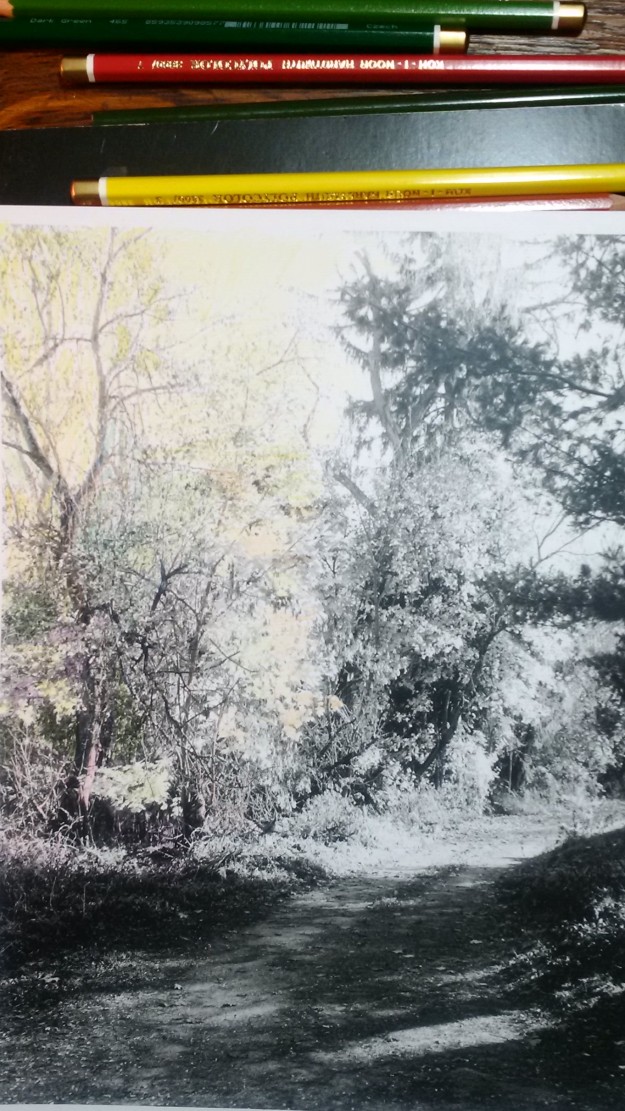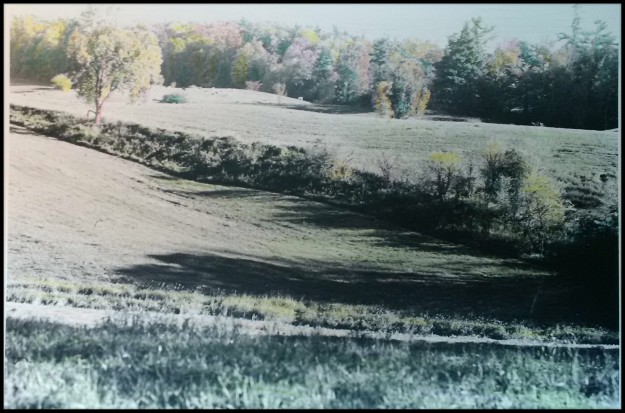November 17, 2016.
Hello, thanks for visiting. Since you’ve asked, a little background:
I’ve been active in photography for about fifty years. Most of that time, of course, involved old-fashioned film photography. I had the full range of equipment, from junk snap+shoot ‘brownies’, to range-finders, and finally SLR cameras in both 35mm and medium formats. I did all my own black & white darkroom work, often with makeshift arrangements (ie. closet).  I also took countless 35mm colour slides, principally of outdoor nature in areas of the Scarborough Bluffs, Lake Ontario, Haliburton and many more remote locals in Ontario.
I also took countless 35mm colour slides, principally of outdoor nature in areas of the Scarborough Bluffs, Lake Ontario, Haliburton and many more remote locals in Ontario.
I sold and used some of these photos in various publications (including my 2000 book about the Rouge Valley). As important (for me), I’ve used them to illustrate numerous presentations I’ve made to various groups over the years. I presently have several projects on the go that will make further use of these photos, including a book about the Scarborough Bluffs and Lake Ontario.
I watched bemused as the whole film photography scene seemed to disappear with the quick emergence of digital imagery. I adapted and now dapple in digital photography, mostly with cell phone cameras. But I have found that computers play too large a role in digital imagery. I’ve also found – as have many other people – that more and easier imagery does not equal better or more valuable imagery.
I do recognize and value the undeniable strengths of digital photography, particularly for scientific purposes.
A main desirable quality from my viewpoint, is the widely-touted role that digital processes have played in reducing environmental impacts of old-fashioned photography, largely by eliminating film-processing chemicals and water-wastage. Yet even here I question the actual net gain: Over a complete life-cycle analysis, is digital still environmentally more desirable, especially when you consider the warehouses and dumps already full of obsolete digital equipment?
Furthermore, art is an human endeavour. And the proliferation of automated tools and techniques on the digital side, does not seem, at least to me, to equate with what might be hoped for in terms of a new, widespread artistic renaissance.
I’ve been encouraged recently by film-photography’s tenacity. Similar to other aspects of the so-called old-fashioned analog era (say, vacuum tubes in top-end music gear), film imagery is growing into a more than niche activity. The neat thing too, is that tons of what was originally prohibitively expensive gear is presently available to the careful haunter of second-hand shops.
Careful use of modern chemistry, washing aids, resin-coated paper; and, especially, film photography’s greatly downsized reality, all help to minimize its environmental footprint today. Furthermore, small quantities of spent photo-chemicals can be retained on-site until they oxidize and are thus rendered inert.
Anyone getting back(?) into film should have a specific focus in mind, otherwise obstacles along the way will defeat you. For myself, that means embracing the strengths and what were once thought of as weaknesses, of film photography.
By taking advantage of the used marketplace, I’ve managed to get into Large Format 4×5 b&w photography, once an out-of-reach fantasy. I found a 1947 Crown Graphic camera, and a Beseler 45 mxcr enlarger. The Graphic is a great field camera. It’s possible to forego darkroom printing entirely by purchasing a high-tech scanner/printer and digitizing the negatives – a kind of new/old hybrid approach.
In Large Format, a single exposure (resulting in a b&w negative) can take an hour or more of work in the field, and I usually only carry four 4×5 films. Several more hours of close attention in the darkroom, developing and printing, is followed by additional time spent hand-colouring each print (if such is desired)
I have not attempted Large Format colour films, as there are no sources of material or processing in my area. I’ve always preferred the control b&w allows. I should say, however, that a new start-up, New55film, is producing Large Format films; including, apparently, colour Polaroid. Looks interesting. Time will tell.
The time spent obtaining each large-format photo cultivates an attentive mode of procedure that is quite different from the ‘take as many as possible’ and ‘photo-shop later’ modus operandi of too much digital imagery. You want to get it right the first time.
The pay-off, too, resides in the technical capabilities of Large Format films themselves. Depending on the type of emulsion, a single old-fashioned 4×5 negative can contain far more information – more impressions of that elusive First Light – than the most powerful digital sensor commonly available. Resolution, and the nuances of tone and shading, are all potentially far beyond digital capabilities.
Large Format cameras themselves beat out their digital brethren in everything but speed and convenience. Lens and bed ‘movements’ provide subtle perspective adjustments that allow a photographer to capture a scene on-the-spot, as first visualized. In addition, the peculiar properties of relatively long-focus lenses (the norm in large format) create unique depth-of-field effects and realistic out-of-focus tonal shadings.
Although as indicated I’m working only in black and white with large format, this has opened the way to experimentation with traditional hand-colouring techniques. In fact, I was amazed to find vintage tip sheets from what might have been thought of as ‘staid old Kodak,’ suggesting all manner of substances for tinting photos. Wine, tea, coffee… anything may or may not work according to the old Kodak guidelines. Special photo-oils were once available for photo-retouching, but appear to have vanished. I was lucky to chance upon a vintage set of Prismacolour pencils in a junk store. Here are examples of photos I’ve done in November, 2016, and tinted with these pencils. These illustrations are simple cellphone shots of the original 8×10 prints:
Waterfall Algonquin Park:
Colouring process just starting on this print: 
Colouring completed: Lane Beside the House,
Meadows and woodlots behind our house.
Trembling Aspen behind the house as evening comes:
Golden Delicious Apple Tree beside the lane:
Fence-row near the house, early November:

